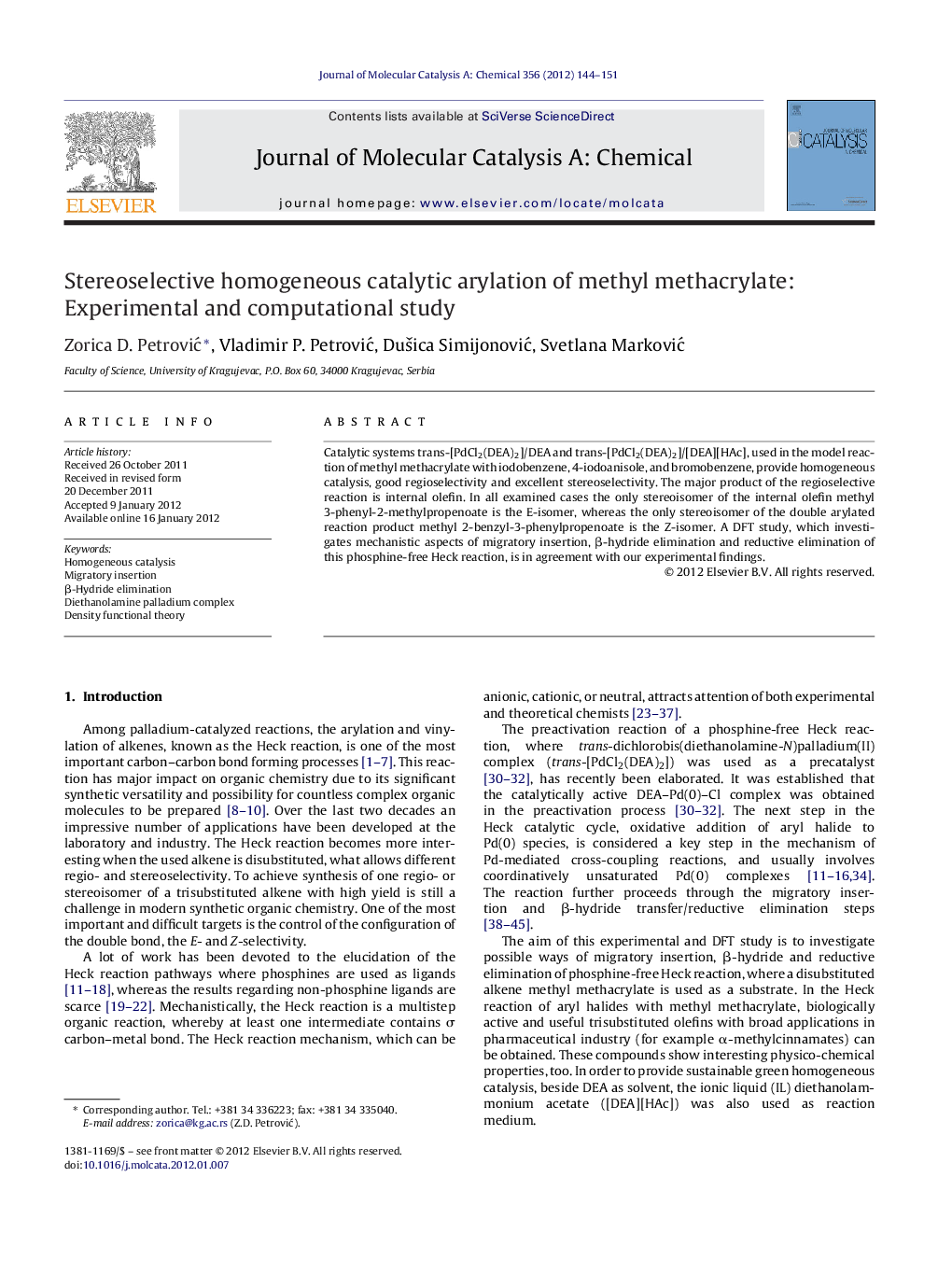| Article ID | Journal | Published Year | Pages | File Type |
|---|---|---|---|---|
| 66162 | Journal of Molecular Catalysis A: Chemical | 2012 | 8 Pages |
Catalytic systems trans-[PdCl2(DEA)2]/DEA and trans-[PdCl2(DEA)2]/[DEA][HAc], used in the model reaction of methyl methacrylate with iodobenzene, 4-iodoanisole, and bromobenzene, provide homogeneous catalysis, good regioselectivity and excellent stereoselectivity. The major product of the regioselective reaction is internal olefin. In all examined cases the only stereoisomer of the internal olefin methyl 3-phenyl-2-methylpropenoate is the E-isomer, whereas the only stereoisomer of the double arylated reaction product methyl 2-benzyl-3-phenylpropenoate is the Z-isomer. A DFT study, which investigates mechanistic aspects of migratory insertion, β-hydride elimination and reductive elimination of this phosphine-free Heck reaction, is in agreement with our experimental findings.
Graphical abstractIn our model Heck reaction with methacrylates two possible pathways for β-hydride elimination are possible: the first pathway yields the expected trisubstituted (internal) E-olefin and the other one leads to the formation of 1,1-disubstituted (terminal) olefin.Figure optionsDownload full-size imageDownload high-quality image (102 K)Download as PowerPoint slideHighlights► Catalytic systems trans-[PdCl2(DEA)2]/DEA or [DEA][HAc] provide homogeneous catalysis. ► Good regioselectivity and excellent stereoselectivity are achieved. ► DFT study showed that β-hydride elimination is key step for selectivity. ► In the first Heck cycle, internal E-olefin is the only stereoisomer. ► In the second cycle, double arylated product is Z-olefine.
